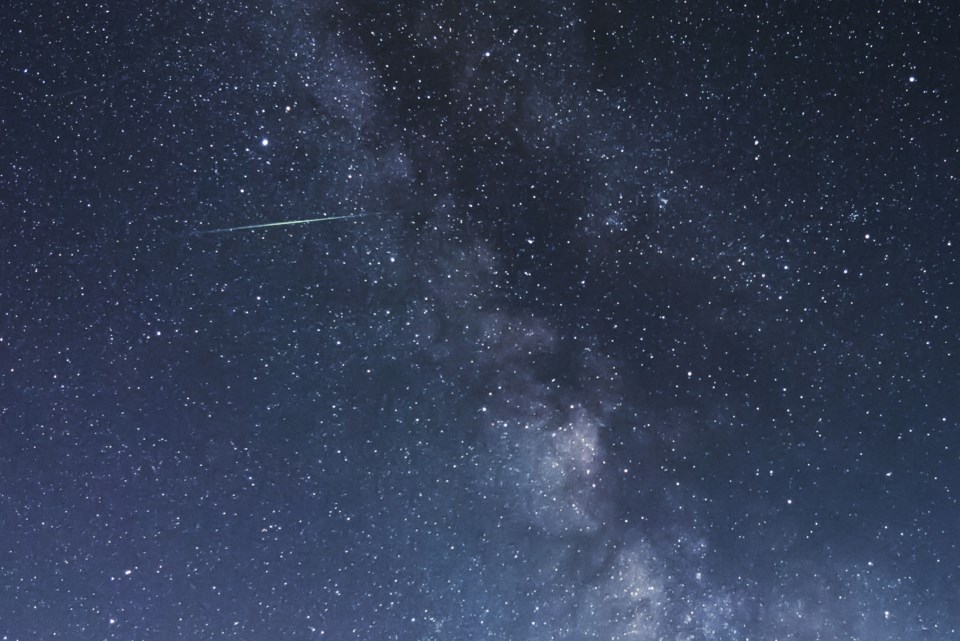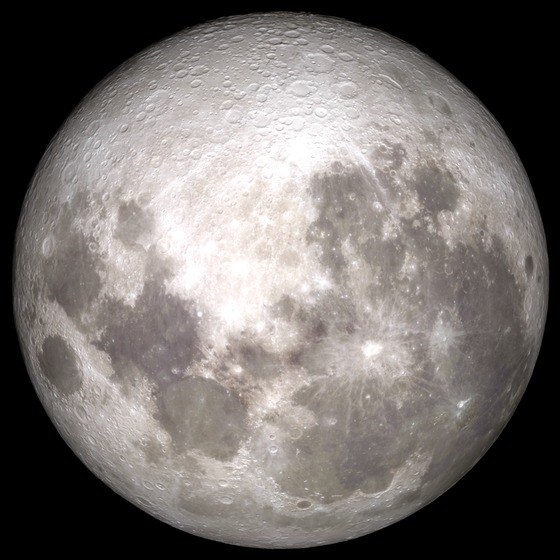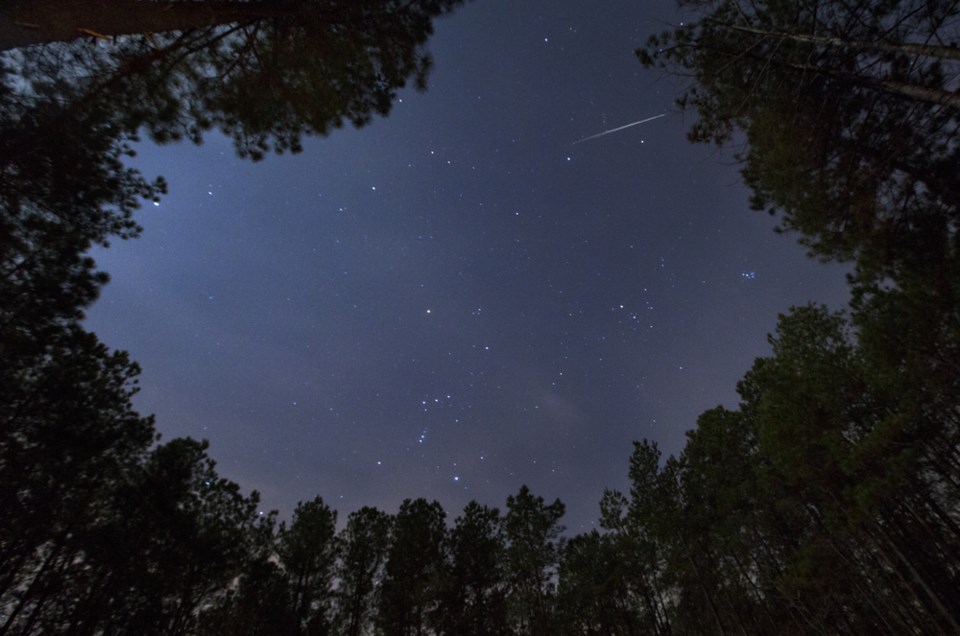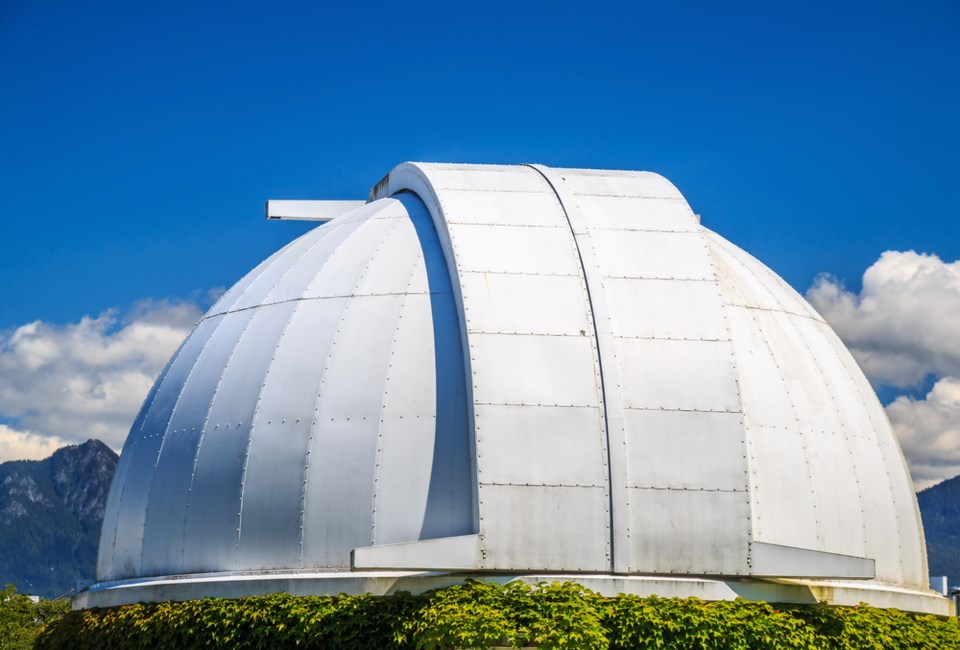(Image: Saturn through a telescope. Credit: Steve Hill )
For cheap thrills, look up, way up, into the sky for the best celestial events of the year. No gear needed, so it makes a perfect, and inexpensive star-studded night. Here are H.R. MacMillan Space Centre Astronomer Derek Kief’s previews of the top 10 locally visible celestial events to look out for in 2015 — ranked by rareness and awesomeness. Top of the list is a total lunar eclipse and supermoon coming in September. The only thing that could be more spectacular is if we came in contact with aliens, Kief says.
April 4: (Nearly) Total Lunar Eclipse – Rank #2
A lunar eclipse is when the shadow of the earth falls on the surface of the moon during an alignment of the sun, moon and earth. Look South West form 2 a.m. to 5 a.m. to view this partial lunar eclipse that is almost a total eclipse.
 May 5-6: Eta Aquarids Meteor Shower – Rank #8
May 5-6: Eta Aquarids Meteor Shower – Rank #8
The Eta Aquarids is an annual shower that’s one of two main showers from Hailey’s comet. Kief said the event should see around 30 meteors per hour and that people should look for them in the early morning to the southeast.
(Image: Eta Aquarids. Credit: Noriaki Tanaka)
May 23: Saturn at Opposition - Rank #5
Saturn is one of the best objects to look at through a telescope, and when it’s in opposition (its closest position to earth), it’s going to look bigger and even more beautiful. Kief suggested stopping by the observatory to see its rings through a telescope if you don’t have access to one.
June 5: Venus at Elongation - Rank #6
This bright star, often referred to as the evening or morning star, will at elongation be the closest it will be to the earth in its orbit, and look brighter and bigger than usual. June 5 is going to be the best time to view this locally, either right before sunrise or right after sunset.
August 12-13: Persieds Meteor Shower – Rank #7
Kief says that thanks to the new moon on August 14, the perfect viewing conditions will be in play, making this favourite meteor shower a sight to see this year — as many as 50 to 100 meteors per hour will cross the night sky at its height. Best time to view: right before midnight to the northeast.
August 29, Sept. 28, Oct. 27: Full Supermoon – Rank #9
Not just a trending hashtag, Supermoons are when the moon is within 361,863 km of the earth. There are between four and six Supermoons ever year, and they look about 7% bigger and 15% brighter than an average moon.
(Image: Full supermoon. Credit: NASA Goddard Space Flight Centre)
September 28: Total Lunar Eclipse and Supermoon – Rank #1
Kief signals this out as the celestial highlight of the year, “unless we come in contact with aliens.” The astronomer said this total lunar eclipse should be spectacular, weather permitting, with the maximal eclipse at 7:47 p.m.
October 28: Conjunction of Venus, Mars and Jupiter – Rank #3
On this date Venus Mars and Jupiter will all be within one degree of each other in the morning sky — a rare occurrence — look east just before sunrise.
 December 13-14: Geminids Meteor Shower – Rank #4
December 13-14: Geminids Meteor Shower – Rank #4
Kief declared the Geminids to be one of the best yearly meteor showers, peaking at 120 meteors per hour. Because there is only going to be a crescent moon for part of the night, it’s going to be dark and clear, allowing for optimum viewing.
(Image: Geminid meteor. Credit: Shutterstock)
Astronomer's viewing tips
Meteor showers: All you need is a dark space, and “dark space” can range from true dark spaces like McDonald “Dark Sky” Park or the North Shore mountains, to open fields or parks with no lights in the middle.
Eclipses: The naked eye is sufficient, but a telescope or pair of binoculars will make it more impactful. A telescope is recommended for Saturn at Opposition, Venus at Elongation and the conjunction of all three. The rings of Saturn can be see with some of the smallest telescopes or even bird watching binoculars.

Public Telescope: The Space Centre’s Gordon Southam Observatory is the only public telescope in the Lower Mainland, and offers a guided look at stars, planets and nebulas best visible for that time of year. It’s open by donation every Saturday (and Fridays too in the summer) from 8 p.m. to midnight.
(Image: Gordon MacMillan Southam Observatory, Vancouver. Credit: Shutterstock)




